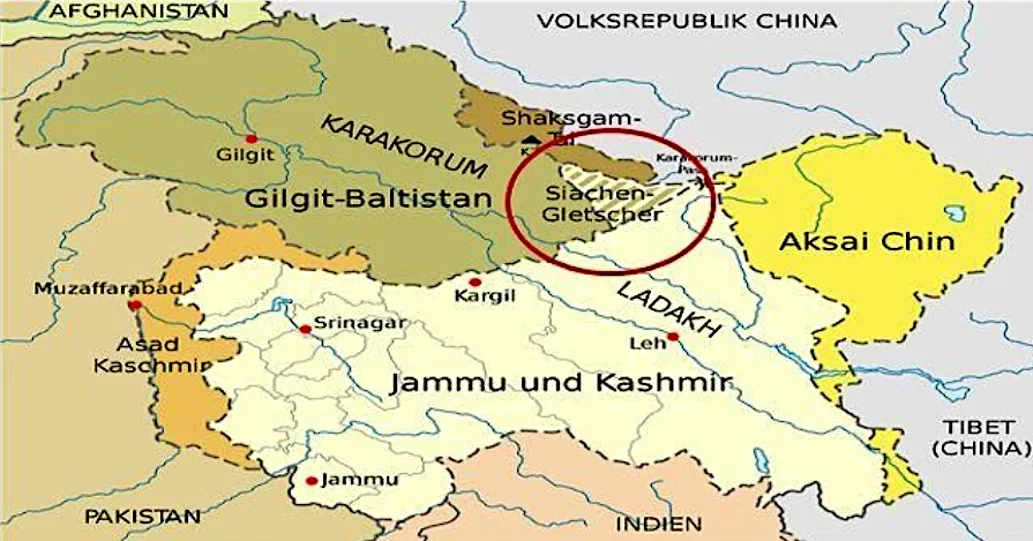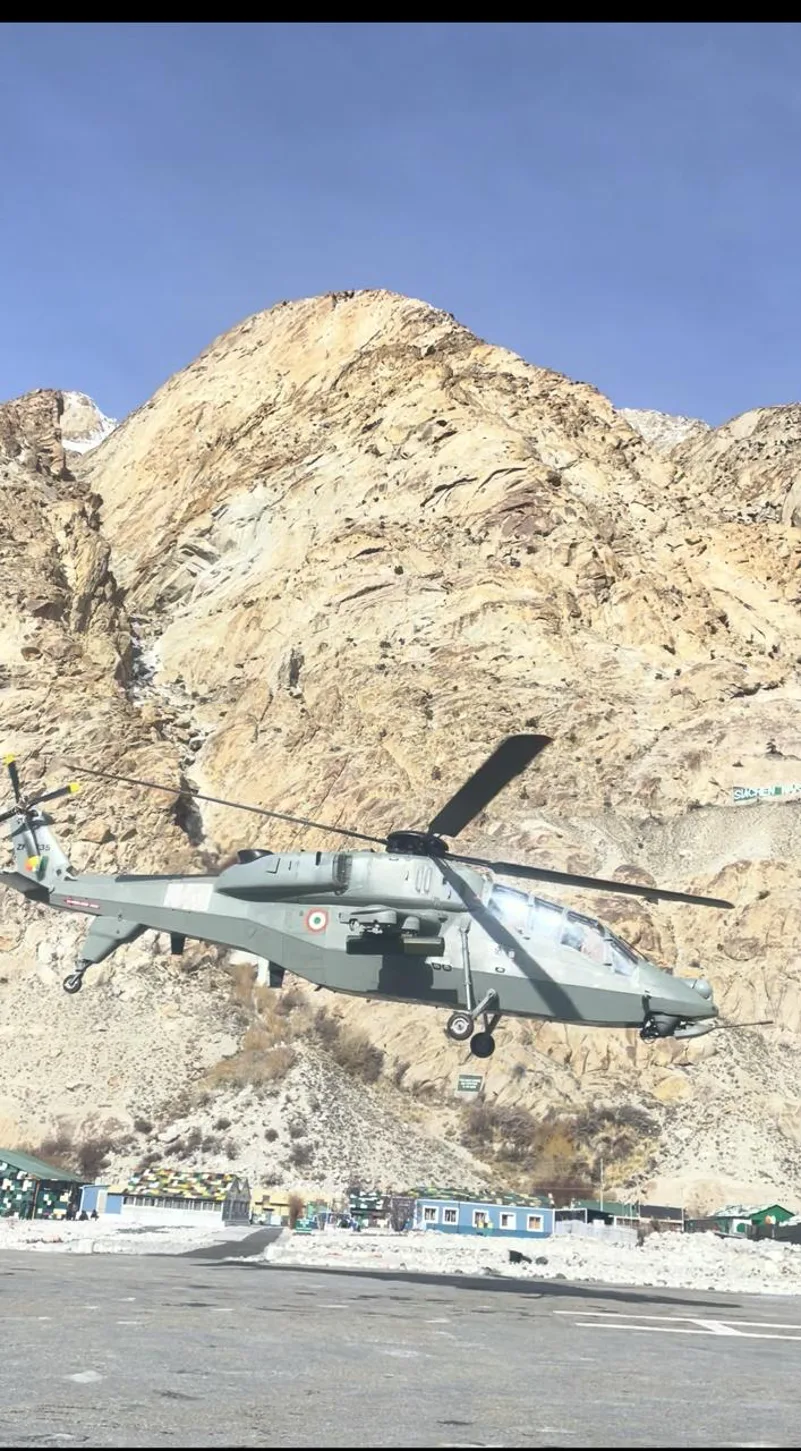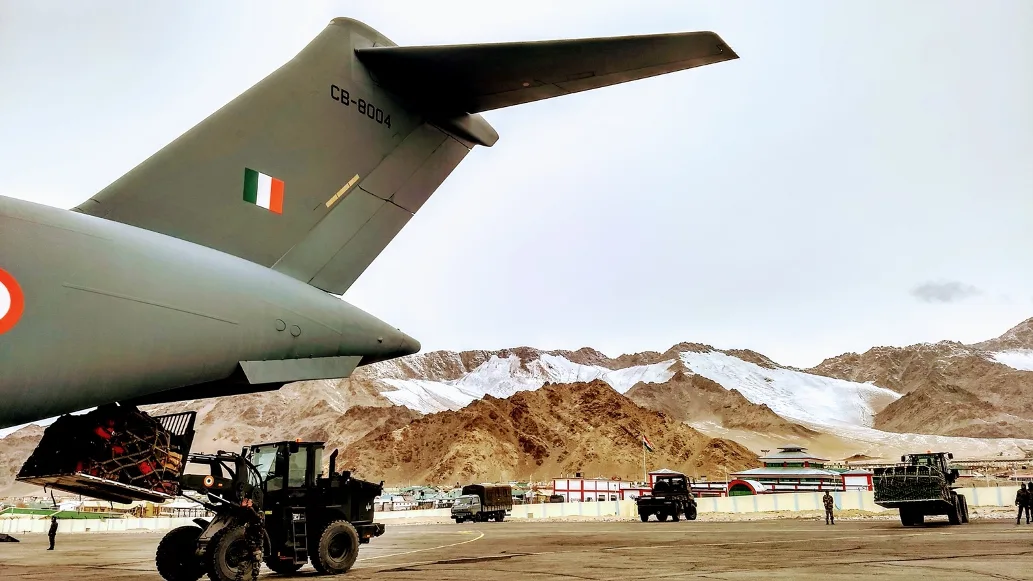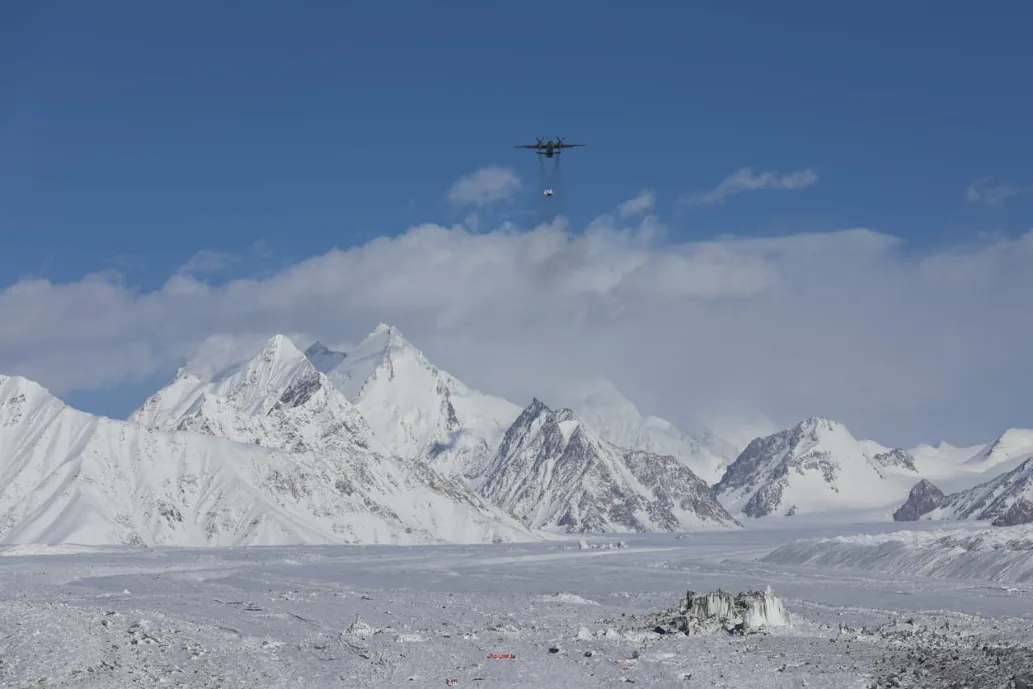What’s in this Article?
- Table of Contents
- Why in the News?
- About Siachen Glacier
- Background of Operation Meghdoot
- Importance of Siachen
- Execution of Operation Meghdoot
- Consequence of Operation Meghdoot
- Significance of Operation Meghdoot
- IAF’s Role and Evolution in Operation Meghdoot
- Conclusion
- Image Gallery
Why in the News?
- On 13th April, India hoisted its national flag at the world’s highest battlefield, Siachen. Indian Army celebrated 40th Siachen Day, saluting heroes of Operation Meghdoot.
- The Indian Army commemorates four decades (40 Years) since the commencement of ‘Operation Meghdoot,’ which safeguarded the Siachen Glacier.
- Advancements such as VSAT (Very Small Aperture Terminal) communication, heavy-lift helicopters, and logistic drones have enhanced operational capabilities.
- Upgrades in medical facilities and connectivity have positively impacted both soldiers and nearby residents.
- The Indian Air Force’s contribution through troop and supply airlifts, as well as fighter aircraft operations, has been pivotal in upholding military supremacy in the area.
- Despite harsh environments, the IAF persists in supporting operations, achieving milestones in endurance and technical prowess.
About Siachen Glacier
- The Siachen Glacier, situated in the Eastern Karakoram range within the Himalayas, lies just northeast of Point NJ9842, marking the end of the Line of Control between India and Pakistan.
- India has administered the entire glacier, including its major passes, since 1984 through Operation Meghdoot.
- Stretching from northwest to southeast, the glacier begins at the base of the Indira Col West, a low point on the Indira Ridge, at an altitude of 6,115 meters, and descends to 3,570
- It ranks as the second-longest glacier in the world outside of polar regions, following Tajikistan’s Fedchenko Glacier.
- Positioned just south of the significant drainage divide separating the Eurasian Plate from the Indian subcontinent, it is part of the heavily glaciated Karakoram region, often dubbed the “Third Pole.”
- The Nubra River originates from the Siachen Glacier, which also holds the distinction of being the highest battlefield globally.
Background of Operation Meghdoot
- Since the Karachi Agreement of July 1949, the Siachen Glacier has been a source of dispute due to vague territorial demarcations and ambiguous authority outlined in the agreement.
- India interpreted the agreement as extending Pakistan’s territory only to the Saltoro Ridge, following the Simla Agreement’s delineation, which stated that the territorial line would proceed “thence north to the glaciers” after the last demarcated Point NJ
- Conversely, Pakistan interpreted the agreement as extending their territory northeast from Point NJ9842 to the Karakoram Pass.
- Consequently, both nations claimed sovereignty over the barren heights and the Siachen Glacier.
- During the 1970s and 1980s, both India and Pakistan allowed numerous mountaineering expeditions to explore the Siachen region on their respective sides, aiming to bolster their claims to the area.
- Notably, Colonel Narinder “Bull” Kumar of the Indian Army led an expedition to Teram Kangri, accompanied by medical officer Captain A.V.S. Gupta.
- In 1984, when Pakistan granted permission for a Japanese expedition to climb an important peak, Rimo I, it further heightened the Indian Government’s suspicions regarding Pakistan’s efforts to legitimize their claim to the region.
Importance of Siachen
- The Siachen glacier marks the boundary between central Asia and the Indian subcontinent, serving as a dividing line between Pakistan and China in the area.
- With India’s control over the Saltoro Ridge, it holds a strategic advantage in potential negotiations over territorial issues with Pakistan in the future.
- Furthermore, the Siachen Glacier is recognized as the primary freshwater reserve in the Indian subcontinent.
- It gives rise to the Nubra River, which contributes to the Indus River, crucial for irrigation in the plains of Punjab, Pakistan.
Execution of Operation Meghdoot
- The Indian military opted to deploy troops from Northern Ladakh, along with some paramilitary forces, to the glacier region. Many of these troops had undergone acclimatization training in Antarctica in 1982 before embarking on the mission to seize control of the entire glacier.
- In 1983, Pakistani military leaders, after observing Indian Army mountaineering activities, feared India’s potential capture of crucial ridges and passes near the Siachen glacier. Consequently, they dispatched their own troops to claim the territory. Unbeknownst to Islamabad, the supplier of Arctic-weather gear they contacted also supplied the same equipment to the Indians. Upon learning of this, the Indian Army swiftly formulated its own strategy, gaining a strategic advantage.
- The Indian Army aimed to seize control of the glacier by April 13, 1984, preempting the Pakistani Army’s planned occupation by four days. Intelligence indicated that the Pakistani operation aimed for April Under the leadership of Lieutenant General Prem Nath Hoon, Operation Meghdoot was launched.
- The initial phase, commencing in March 1984, involved a battalion of the Kumaon Regiment and units from the Ladakh Scouts marching through the ice-bound Zoji La pass to reach the eastern base of the glacier.
- By April 13, around 300 Indian troops had entrenched themselves in critical positions on the glacier, including the key mountain passes of Sia La, Bilafond La, and later Gyong La by 1987, as well as the commanding heights of the Saltoro Ridge to the west of the Siachen Glacier.
- Both countries swiftly converted temporary camps into permanent posts. The exact number of casualties during this operation remains undisclosed.
Consequence of Operation Meghdoot
- In the aftermath of Operation Meghdoot, India secured control over the Siachen Glacier, spanning 70 kilometers, along with its associated glaciers and key passes such as Sia La, Bilafond La, and Gyong La.
- This acquisition strategically positions India with the advantage of holding the higher grounds in the region.
- Presently, the Indian Army stands as the sole military force globally to have successfully transported tanks and heavy weaponry to such extreme altitudes, exceeding 5,000 meters (16,000 feet).
- Approximately ten infantry battalions from both the Indian and Pakistani armies are actively stationed at elevations reaching up to 6,400 meters across the glacier area.
Significance of Operation Meghdoot:
- Technological Progress and Infrastructure Development
- In the past forty years, there have been substantial endeavors to improve infrastructure and living conditions on the Siachen Glacier.
- A noteworthy development includes the enhancement of mobile and data connections through the implementation of VSAT (Very Small Aperture Terminal) technology.
- This advancement has transformed communication among troops on the glacier, offering vital data and internet access.
- Enhanced Supply Chain and Logistics
- The implementation of large-capacity helicopters and unmanned aerial vehicles designed for logistics has greatly enhanced the delivery of crucial supplies to personnel stationed in remote outposts, particularly in challenging winter climates.
- This encompasses guaranteeing access to clothing, climbing gear, and provisions.
- Improved Living Conditions and Connectivity
- Recent efforts have concentrated on enhancing communication, resulting in progress in the supply chain.
- As a result, personnel deployed at forward positions in the Northern and Central Glaciers now have the ability to obtain fresh food supplies including rations and vegetables.
- State-of-the-Art Medical Infrastructure
- The Siachen Glacier now features advanced medical facilities, including telemedicine stations set up by ISRO.
- These resources offer vital medical assistance not just to military personnel but also to the surrounding communities and visitors in the Nubra Valley.
- Recognition of Sacrifices and Immortal Spirit
- The Indian Army, through an official statement, recognized the bravery of its soldiers and the enduring determination that has defined their extensive service in Siachen.
IAF’s Role and Evolution in Operation Meghdoot
- The Indian Air Force played a pivotal role in supporting Operation Meghdoot, initially focusing on using transport and helicopter aircraft to transport troops and materials.
- Over time, its involvement expanded, with the deployment of fighter aircraft such as the Hunter, MiG-23s, and MiG-29s from high-altitude airfields like Leh and Thoise.
- This extended role involved conducting fighter sweeps and simulated strikes over the glacier, which boosted morale and acted as a deterrent to adversaries.
- In 2009, the IAF introduced Cheetal helicopters, modified for operations in high-altitude environments.
- Then, in 2013, it demonstrated its capabilities by successfully landing a Lockheed Martin C-130J Super Hercules at Daulat Beg Oldie, the world’s highest airstrip near the Line of Actual Control in Ladakh.
- Presently, a range of IAF aircraft, including the Rafale, Su-30MKI, Chinook, Apache, and others, continue to support Operation Meghdoot.
IAF’s Lifeline Role in Extreme Conditions
- Flying at the highest battlefield on Earth, Indian Air Force helicopters serve as a vital lifeline for Indian soldiers, offering essential assistance in emergencies, logistical operations, and the evacuation of injured personnel from the glacier.
- Their remarkable feats in endurance, flight, and technical prowess underscore the IAF’s dedication and expertise in supporting the ongoing military efforts on the Siachen Glacier, which have spanned four decades.
- On the occasion of the Indian Army’s 40th anniversary on the Siachen Glacier, there is reflection not only on the advancements in technology and logistics but also on the immense sacrifices and unwavering commitment of its members.
- ‘Operation Meghdoot’ stands as a symbol of India’s unwavering resolve to protect its borders and ensure the welfare of its soldiers in one of the most formidable terrains globally.
Conclusion
- In conclusion, Operation Meghdoot serves as a poignant reminder of India’s enduring commitment to safeguarding its borders and ensuring the well-being of its soldiers, particularly in challenging environments like the Siachen Glacier.
- The operation, which has spanned four decades, highlights the remarkable dedication, sacrifices, and technical prowess of the Indian Armed Forces.
- It also underscores the importance of continuous innovation and adaptation in facing evolving security challenges.
- As India commemorates 40 years since the inception of Operation Meghdoot, it reaffirms its resolve to protect its sovereignty and uphold the safety and security of its military personnel in all circumstances.
Disclaimer: The article may contain information pertaining to prior academic years; for further information, visit the exam’s “official or concerned website“.
Image Gallery (Source: PIB)
Explore our courses: https://apnipathshala.com/courses/
Explore Our test Series: https://tests.apnipathshala.com/


















